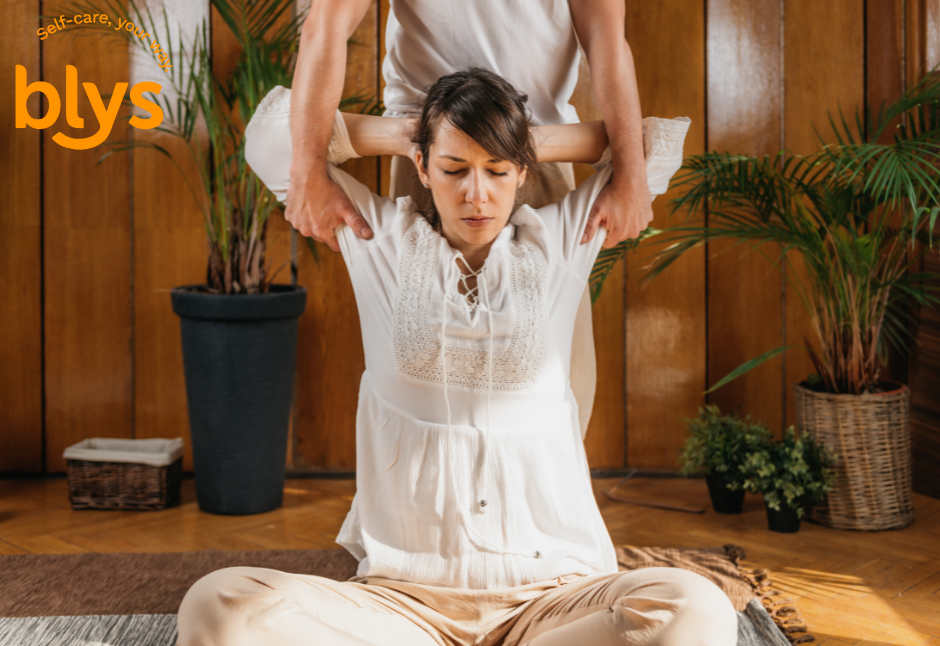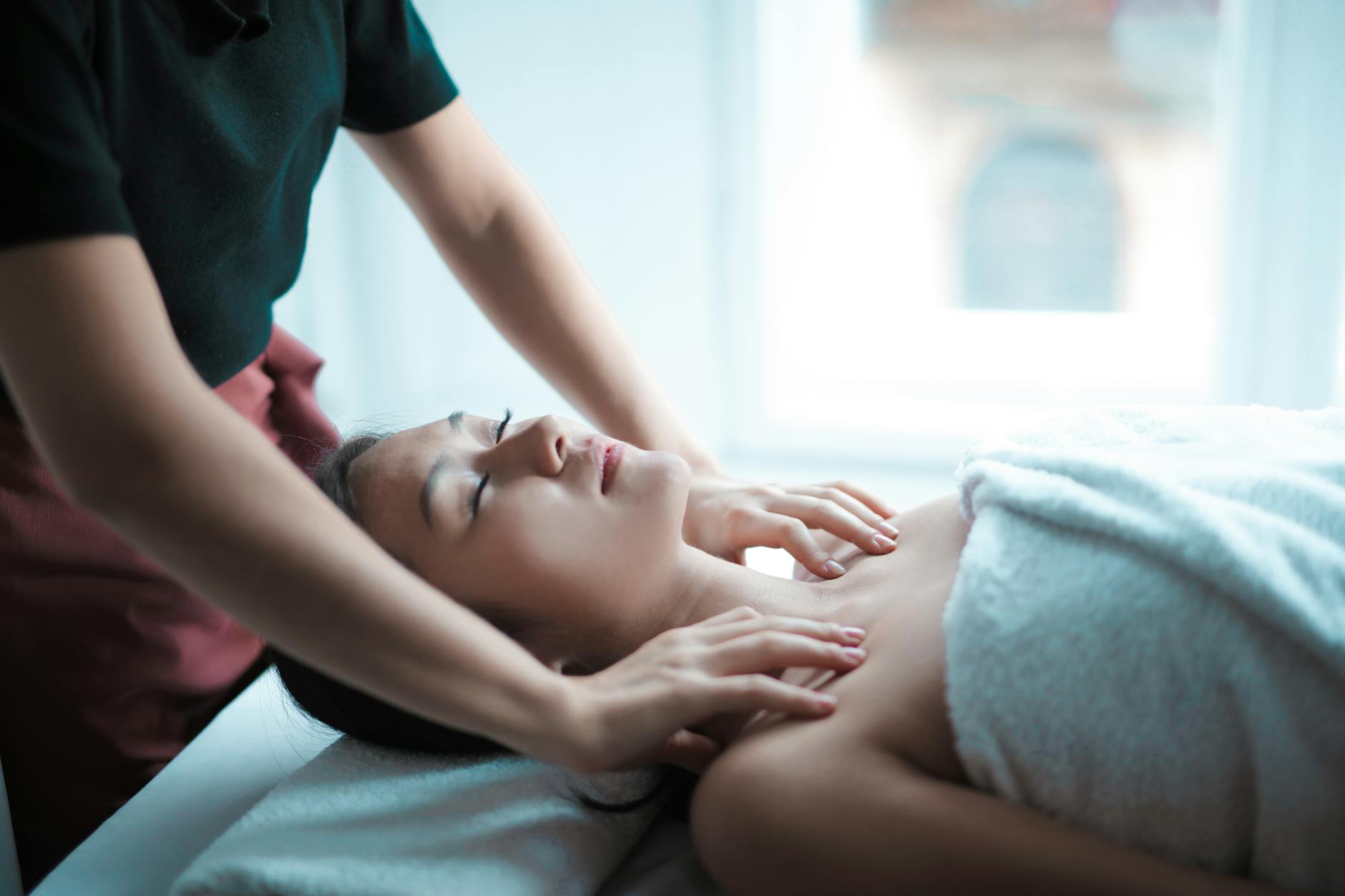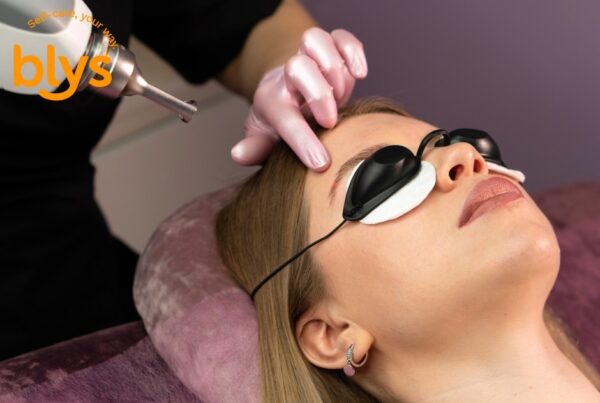
More people in the UK are now combining massage and flexibility training as part of their wellness routines and with good reason. These two practices complement each other perfectly, offering benefits that go beyond simply stretching tight muscles or easing a sore back.
Together, they help improve mobility, speed up recovery, reduce stress, and create a deeper sense of relaxation. For anyone juggling the demands of work, family, and personal wellbeing, this pairing is an effective way to stay balanced.
Massage and flexibility training share the same overall goal: to loosen tension, keep joints moving smoothly, and calm the mind. Stretching strengthens and lengthens muscles, while massage targets knots and tight fascia, improves circulation, and melts away built-up stress.
When combined, they create a powerful approach that supports both physical performance and mental health.
With Blys, you can make this combination part of your weekly routine without leaving your home. A professional, vetted therapist brings expert care directly to your door, allowing you to pair stretching with massage in a way that feels safe, convenient, and personalised.
Why Massage and Flexibility Work Well Together
At first glance, massage and stretching may seem like different activities, but they actually work on similar systems of the body in complementary ways. Flexibility training focuses on the muscles and joints, lengthening fibres and keeping them supple.
Massage, on the other hand, works directly on tight areas to release tension, improve blood flow, and calm the nervous system.
Research has shown that massage can improve range of motion and reduce muscle tightness, while regular stretching supports circulation and joint health.
Together, they create a cycle: massage prepares the body for deeper and safer stretches, while flexibility exercises help maintain the gains achieved during massage.
This combination results in:
- Quicker recovery after exercise or long hours at a desk.
- Better body awareness and posture.
- A stronger sense of ease and relaxation in daily life.
By weaving massage into a regular flexibility routine, you not only improve how your body feels today but also set the foundation for healthier, pain-free movement in the long term.
This balanced approach works whether you’re training for athletic goals, managing the physical effects of a desk job, or simply wanting to move more comfortably as you go about your day.
For more on how massage supports flexibility in daily life, check out our guide on sports massage and everyday flexibility.
Myofascial Release for Better Mobility
One of the most important benefits of combining massage and flexibility is the effect on fascia the connective tissue that surrounds muscles and joints. When fascia becomes restricted, movement feels stiff or even painful.
Myofascial release, a massage technique that applies gentle, sustained pressure, helps soften these tissues and restore smooth motion.
Flexibility training naturally stretches fascia, but when paired with massage the results can be even more effective. For example:
- Hamstring stretches + deep tissue release: This combination lengthens the back of the legs while relieving stubborn knots.
- Hip openers + trigger point work: Opens the hips and reduces lower back strain.
- Spinal twists + gentle compression: Releases tension along the back and improves rotational mobility.
You can also explore at-home tools such as foam rollers or massage balls for a DIY approach:
- Roll the feet before balance or mobility drills.
- Loosen hamstrings after long sitting sessions.
- Ease back tightness before winding down with relaxation stretches.
For deeper or more targeted release, a Blys massage therapist can tailor sessions to your personal flexibility goals, ensuring both safety and effectiveness.
Massage for Better Flexibility
Massage plays a key role in improving flexibility because it helps soften and lengthen muscle fibres. When muscles are supple and joints move freely, stretching becomes safer and more effective. This reduces the risk of strains or pulls and allows you to gradually increase your range of motion.
Massage techniques particularly effective for flexibility include:
- Effleurage: Light, gliding strokes that warm up muscles and increase circulation.
- Deep tissue massage: Firm pressure targeting tight hamstrings, calves, or shoulders to free up movement.
- Assisted stretching: Techniques such as proprioceptive neuromuscular facilitation (PNF) or Thai-style stretches, which combine gentle resistance and pressure to extend flexibility in a safe way.
When these methods are paired with a regular stretching routine, progress happens faster. Over time, stretches feel easier, more rewarding, and less prone to discomfort.
Recovery Massage Techniques After Stretching
Even after simple stretching sessions, muscles can feel tender especially if you’ve challenged yourself with deeper or longer holds. Massage supports recovery by easing delayed onset muscle soreness (DOMS), improving circulation, and helping the nervous system return to a relaxed state.
Some of the best recovery massage techniques include:
- Lymphatic drainage: Encourages circulation and reduces swelling after exercise.
- Swedish massage: Uses long, flowing strokes to relax muscles and lower stress hormones.
- Myofascial release: Targets stubborn areas of tension that stretching alone might not resolve.
By balancing flexibility exercises (active recovery) with massage (passive recovery), your muscles stay resilient, loose, and well supported. This approach not only speeds healing but also helps prevent small issues from turning into larger injuries.
At-Home Starters: DIY Massage + Flexibility Pairings
You don’t need a spa setup to start reaping the benefits of combining massage and stretching. A few simple techniques can make a noticeable difference:
- Neck release before side bends: Use gentle fingertip pressure at the base of your skull before leaning into side stretches.
- Foot massage before calf stretches: Roll a tennis ball under your arches to prepare the lower body.
- Foam rolling the back before floor stretches: Loosens muscles and helps you relax more deeply.
The key is to keep pressure light, move slowly, and avoid pushing into pain. These self-care routines are a great foundation, and professional help from a Blys therapist can elevate them into a long-term, safe, and tailored plan.
Not sure how often to book your sessions? Explore our guide on how often you should get a sports massage to find the right balance for your body.
Tips for Getting the Best Results
Massage and flexibility training deliver the greatest benefits when practised consistently. Sporadic sessions can feel good in the moment, but building regular habits ensures lasting results.
Here are a few simple tips to get the most out of your routine:
- Stay hydrated: Water supports circulation and muscle recovery after both stretching and massage.
- Pair with breathwork: Deep breathing relaxes your nervous system, making stretches more effective.
- Progress gradually: Avoid forcing deeper stretches too quickly; let your body adapt naturally.
- Create a routine: Schedule regular sessions whether weekly massage or daily stretches to maintain improvements.
- Listen to your body: Pay attention to areas of tightness or discomfort and adjust accordingly.
With expert guidance and consistent care, your massage and flexibility plan can become a customised wellness strategy that supports your overall wellbeing.
Who Benefits Most from Massage and Flexibility Training
Almost anyone can gain something from combining these practices, but certain groups may notice the difference more quickly:
- Athletes: Faster recovery times, improved performance, and reduced injury risk.
- Desk workers: Relief from stiffness in the neck, shoulders, and lower back.
- Parents and busy professionals: Efficient stress release that fits into tight schedules.
- Older adults: Improved mobility, balance, and stability with gentle, supportive care.
Since Blys offers in-home appointments across the UK, you don’t need to add travel or extra stress to your already busy day. Whether you’re in Knightsbridge, East London, North London, or a regional town, you can enjoy professional care right where you are.
Getting Started with Blys
Adding massage to your flexibility routine has never been easier. With Blys, the process is simple:
- Visit the website or download the app.
- Choose your service and preferred time.
- A vetted, professional therapist arrives at your home with everything needed.
From there, you can enjoy a tailored session designed to complement your stretching and mobility goals. Blys is available nationwide, offering a safe, professional, and convenient way to keep your body moving well and feeling its best.
Wrapping Up
Massage and flexibility training are powerful on their own, but when combined they create a holistic approach to mobility, recovery, and overall wellbeing. Stretching keeps your muscles long and your joints healthy, while massage releases tension, calms stress, and prepares your body for deeper movement.
Together, they form a routine that supports everything from athletic performance to everyday comfort at your desk. With Blys, you don’t need to set aside hours for spa visits or gym sessions. Instead, a qualified therapist comes to you, fitting expert bodywork seamlessly into your lifestyle.
Book your in-home massage today with Blys and take the first step toward better flexibility, faster recovery, and a more relaxed, balanced life.





